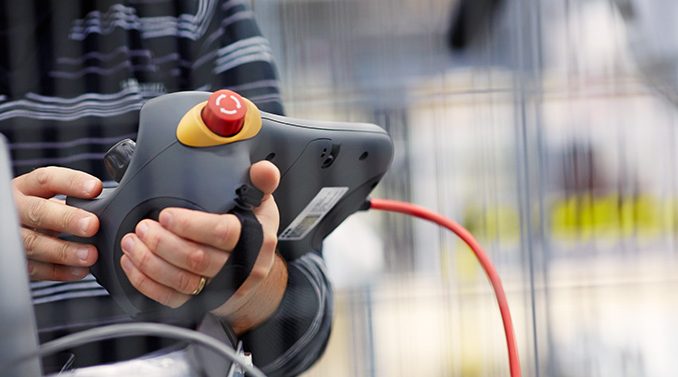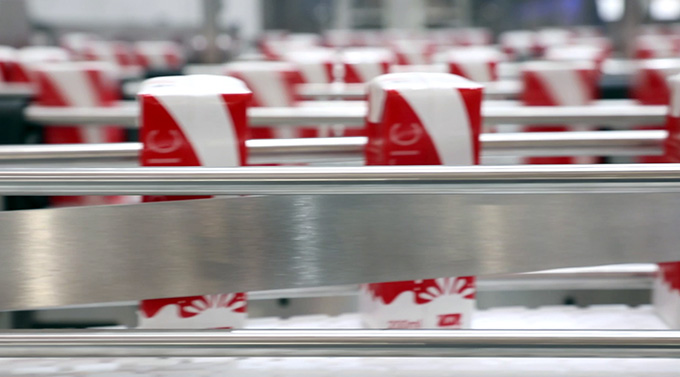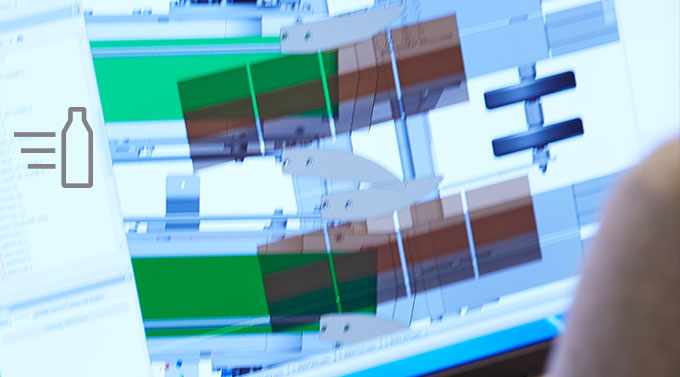
A well-known and proven, but a bit outdated, method or a modern reliable method with a high investment cost? That is the million-dollar question. In this blog article, I will describe electromechanics and pneumatics as well as outline the differences between how the two techniques provide power and motion to your production equipment.
Two different methods to provide power and motion to your production equipment
There are two common methods that make your applications and functions move products from A to B in your production plant. You can use pneumatics, which is compressed air that is used to transmit, store and manage energy. Or, you can use electromechanics to provide power and motion to your production equipment. Pneumatics is the old, proven method that has been with us for generations. Electromechanics, on the other hand, is a more optimized and cost efficient method. Despite the modern method that is more adapted to current standards, the old pneumatic solution is still the most common method used in the production industry.
Pneumatics – a well-known technology with great responsiveness
 Pneumatics is a proven and well-known technology that has been used in the industry for a long time. There are plenty of different applications and functions that are adaptive to the technology, which facilitates the design of different pneumatic solutions. With pneumatics the reaction force is really fast but normally hard to control during the movement. Normally you only have two positions while with the electromechanical solution you can have several and also control acceleration and retardation. Thus, pneumatics performs best in situations where you have short strokes and don’t need to control the movement. Consequently, the production cycle could go faster when using pneumatics. However, if the movement is not controlled the fast speed could have a negative impact on the quality of the equipment as well as the products being transported. Uncontrolled movement can cause the products to collide with each other, which can affect the products in a negative way.
Pneumatics is a proven and well-known technology that has been used in the industry for a long time. There are plenty of different applications and functions that are adaptive to the technology, which facilitates the design of different pneumatic solutions. With pneumatics the reaction force is really fast but normally hard to control during the movement. Normally you only have two positions while with the electromechanical solution you can have several and also control acceleration and retardation. Thus, pneumatics performs best in situations where you have short strokes and don’t need to control the movement. Consequently, the production cycle could go faster when using pneumatics. However, if the movement is not controlled the fast speed could have a negative impact on the quality of the equipment as well as the products being transported. Uncontrolled movement can cause the products to collide with each other, which can affect the products in a negative way.
Sustainable and optimized functionality with electromechanics
 Electromechanics is a more complete technique, giving pneumatics tough competition on the market. Electromechanics combines electrical and mechanical processes and procedures drawn from electrical engineering and mechanical engineering. An electrical solution gives you more information about how your production is doing, compared to pneumatics. An electrical solution could tell you how much energy your production is consuming and how your electric motor is performing, which helps you plan your maintenance and prolong your service intervals. This will, in turn, increase your uptime and reliability towards your equipment. This means it is easier to plan maintenance on an electromechanical solution, compared to a pneumatic solution where the need for service often comes as a surprise.
Electromechanics is a more complete technique, giving pneumatics tough competition on the market. Electromechanics combines electrical and mechanical processes and procedures drawn from electrical engineering and mechanical engineering. An electrical solution gives you more information about how your production is doing, compared to pneumatics. An electrical solution could tell you how much energy your production is consuming and how your electric motor is performing, which helps you plan your maintenance and prolong your service intervals. This will, in turn, increase your uptime and reliability towards your equipment. This means it is easier to plan maintenance on an electromechanical solution, compared to a pneumatic solution where the need for service often comes as a surprise.
Control your production line to decrease maintenance costs and increase yield
 The electromechanical solution enables you to control your equipment’s speed and movements, meaning you only use the amount of electricity that you need by controlling the equipment in a smart way. The solution can be optimized for the actual product characteristics and managed so it only uses a fraction of its capacity, making it more environmentally friendly. The pneumatic solution on the other hand, which is either turned on or off, uses the same amount of power regardless of what needs to be transported. The electromechanical solution is more efficient than the pneumatic alternative, which always have leakage and low efficiency. The electromechanical solution results in decreased energy consumption and maintenance cost. In addition, the sound level is often lower on an electromechanical solution than on a pneumatic solution. Since you can control the production line in a better way using electromechanics, the solution is more gentle towards the equipment and products, increasing the yield.
The electromechanical solution enables you to control your equipment’s speed and movements, meaning you only use the amount of electricity that you need by controlling the equipment in a smart way. The solution can be optimized for the actual product characteristics and managed so it only uses a fraction of its capacity, making it more environmentally friendly. The pneumatic solution on the other hand, which is either turned on or off, uses the same amount of power regardless of what needs to be transported. The electromechanical solution is more efficient than the pneumatic alternative, which always have leakage and low efficiency. The electromechanical solution results in decreased energy consumption and maintenance cost. In addition, the sound level is often lower on an electromechanical solution than on a pneumatic solution. Since you can control the production line in a better way using electromechanics, the solution is more gentle towards the equipment and products, increasing the yield.
To sum it up, pneumatics has a smaller investment cost compared to electromechanics. However, in the long run, pneumatics has higher operation costs and higher maintenance costs. The electromechanical function has a higher investment cost but keeps the total cost of ownership down.
FlexLink designs efficient and cost effective automated production flow solutions
FlexLink advocates the use of electric power in production by designing electromechanical solutions and promote electromechanical functions in our systems. We, at FlexLink, work hard to develop our electric solutions to find new energy efficient methods that can manage the products and the flow in a smart way. As companies adapt to Industry 4.0, there is an increasing demand to get a complete overview of the production plant, status of each line, work in process, material and planning. There is also a need to know how to connect information between the machines and how to make production more efficient. To achieve a better overview of your production, it is crucial to have intelligent equipment that can communicate with each other. Based on those needs, the electromechanical solution is the preferred method.
What are your thoughts on pneumatics vs electromechanics? Please share your experiences with us on social media. For more information, contact me directly or visit our website.


Leave a Reply